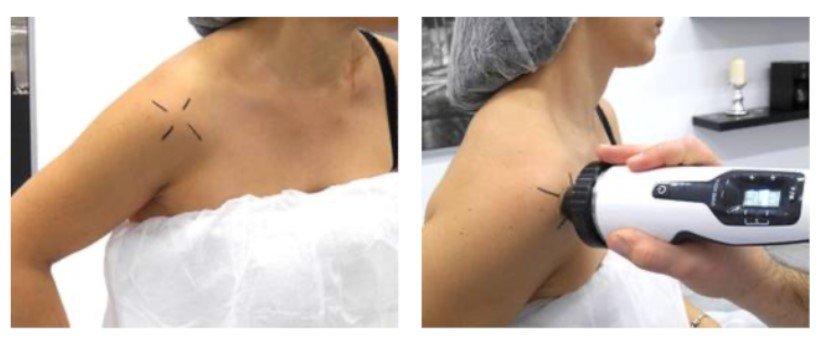
Extracorporeal Shockwave Therapy (ESWT) is a popular non-invasive tool used in sports medicine to treat musculoskeletal pain and injuries in both athletes and non-athletes. It works by delivering shock waves to injured soft tissues, to reduce pain and promote healing.
Shockwave therapy is often done “blind,” where the practitioner takes an educated guess to target damaged tissues. Ultrasound guidance takes the guesswork out of ESWT by providing real-time images of tissues buried deep beneath the skin’s surface.

There are two basic types of ESWT: Radial (soft) and focused (hard).
Radial shock wave therapy is the most common form of ESWT, used for a larger treatment area at a more superficial level. Radial shock waves emit their greatest energy at the skin’s surface, and lose power as their energy penetrates deeper tissues. Radial shock waves are most often used for superficial tendinopathies and trigger points, myofascial pain, plantar fasciitis and hip pain at the greater trochanter.
Focused shock wave therapy uses a cylindrical coil to generate electromagnetic waves that penetrate deeper tissues. They cause tissue membranes to vibrate and create pressure waves in their surrounding fluids without losing energy. Focused shock waves target a smaller focal area. They are used to treat acute injuries, bone fractures, shin splints, groin pain, Achilles tendon injuries, tibial pain, ankle sprains and healing wounds.
Focused and radial shock waves are often used in combination to treat acute and repetitive overuse injuries in athletes.

Using ultrasound technology to help guide ESWT has many advantages:

If you are athletic or physically active, you are no stranger to sore muscles and overuse injuries. Ultrasound guided ESWT can get to the source of pain and accurately target affected tissues, to speed up healing and recovery. ESWT offers a safe and effective treatment option for conditions like plantar fasciitis, carpal tunnel syndrome, tennis elbow, golfer’s elbow, and rotator cuff pain and dysfunction.
ESWT is not recommended for children, pregnant women, people with blood clots or taking blood thinners, people with pacemakers, anyone with tumors or infections at the treatment site, or if you have had a steroid injection in the past 6 weeks.
If you suffer from chronic pain, tendinopathies, athletic overuse injuries or other musculoskeletal issues, ESWT may be an effective solution for relieving pain and accelerating the healing process. At NYDNRehab, we have the most sophisticated technologies available in a private rehab clinical setting. We provide a number of innovative treatments geared to the unique needs of each individual patient. Contact us today, and discover what it feels like to move like a pro at NYDNRehab.
Dr. Lev Kalika is a world-recognized expert in musculoskeletal medicine. with 20+ years of clinical experience in diagnostic musculoskeletal ultrasonography, rehabilitative sports medicine and conservative orthopedics. In addition to operating his clinical practice in Manhattan, he regularly publishes peer-reviewed research on ultrasound-guided therapies and procedures. He serves as a peer reviewer for Springer Nature.
Dr. Kalika is an esteemed member of multiple professional organizations, including: